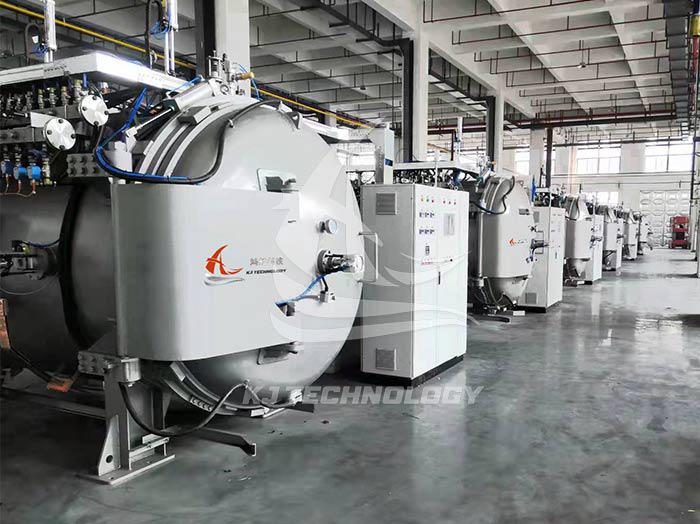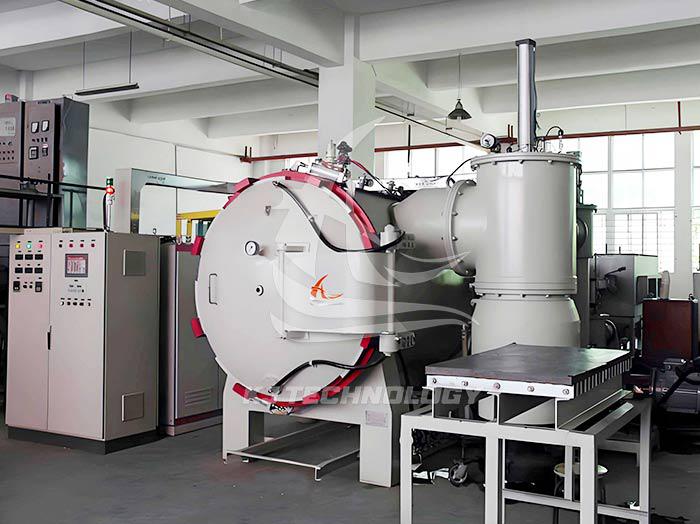Is the Gaozhen air quenching furnace good?
 11-18-2025 Author: KJ technology
11-18-2025 Author: KJ technology
Gaozhen air quenching furnace is an efficient and high-quality heat treatment equipment with significant advantages in high-end manufacturing fields, especially suitable for scenarios with strict requirements for material performance. Its core advantages are reflected in the following aspects:
1. Process performance advantages
Non oxidative heating and surface quality improvement
By eliminating impurities such as oxygen and water vapor in a vacuum environment, the workpiece can be heated without oxidation or decarburization. After treatment, the surface finish reaches mirror level without the need for subsequent polishing or sandblasting. For example, the surface roughness of automotive transmission gears is reduced after treatment, meeting the requirements of precision assembly.
Uniform cooling and deformation control
Adopting high-pressure inert gas (such as nitrogen and helium) circulation cooling, combined with the "low-pressure start+gradual pressure rise" strategy, to reduce the deformation of complex structural workpieces (such as thin-walled gears). A case study of turbine disk treatment for a certain aircraft engine shows that the radial deformation is reduced, significantly improving assembly accuracy.
Material performance enhancement
Vacuum degassing can remove micro pores inside the workpiece and improve material density. For example, after treatment, the hardness of mold steel is increased, the impact toughness is improved, and the service life is extended. For titanium alloy components, gas quenching process can accurately control the precipitation morphology of alpha phase, resulting in longer fatigue life.
Process flexibility and material adaptability
By adjusting the gas type (nitrogen/argon/helium), pressure (0.8-20bar), and flow rate, it is possible to meet the diverse material requirements:
Structural steel: 2MPa nitrogen quenching achieves high surface hardness and high core hardness.
High speed steel: The helium cooling rate reaches 100 ℃/s, enhancing its red hardness.
Titanium alloy: High vacuum environment avoids loss of volatile elements and meets aerospace grade purity requirements.
2. Economic and environmental benefits
cost optimization
Equipment equipped with a gas recovery system can reduce nitrogen consumption, eliminating the cost of quenching oil procurement and waste liquid treatment. According to statistics from a certain automotive parts company, a single production line can save operating costs annually.
Production efficiency improvement
Programmable temperature control system achieves precise heating and reduces energy waste. The Kejia Furnace intelligent production line achieves 24-hour unmanned continuous operation, shortening the processing cycle of a single furnace and improving efficiency compared to traditional processes.
Green manufacturing conforms to the trend
No oil pollution emissions or harmful gas generation, meeting environmental standards.
3. Typical application scenarios
Aerospace field
Handle key components such as nickel based high-temperature alloy turbine discs and titanium alloy casings, eliminate casting segregation defects, and improve durability. After gas quenching, the high-temperature creep life of certain engine blades is longer.
automotive industry
After precision processing of components such as transmission synchronizers, differential planetary gears, etc., the distortion control accuracy is high, the first pass rate is improved, and the amount of grinding processing is reduced.
High end mold manufacturing
After treatment, the surface hardness of die-casting molds is high, the thermal fatigue crack initiation cycle is prolonged, and the mold life is improved.
4. Equipment selection suggestions
Parameter matching principle
Temperature range: Priority should be given to equipment with a maximum temperature of ≥ 1300 ℃ to meet the requirements of nickel based alloy solution treatment.
Vacuum degree: High vacuum type (≤ 5 × 10 ⁻³ Pa) is suitable for high-purity materials such as titanium alloys, while medium vacuum type (10 ⁻² -10 ⁻³ Pa) meets most structural steel processing requirements.
Cooling system: equipped with high-pressure centrifugal fan and full copper tube heat exchanger, the cooling speed can reach oil quenching level (≥ 80 ℃/s).
Intelligent functions
Choose products that integrate PLC control systems and multi-level temperature control programs, supporting gradient temperature rise and fall process curve settings.
Industry benchmark reference
The Kejia furnace vacuum high-pressure gas quenching production line uses a special combination of gas media to achieve oil quenching level cooling speed without cleaning process. It has been applied to the mass production of aircraft components, and the equipment stability and environmental performance have reached the international leading level.








